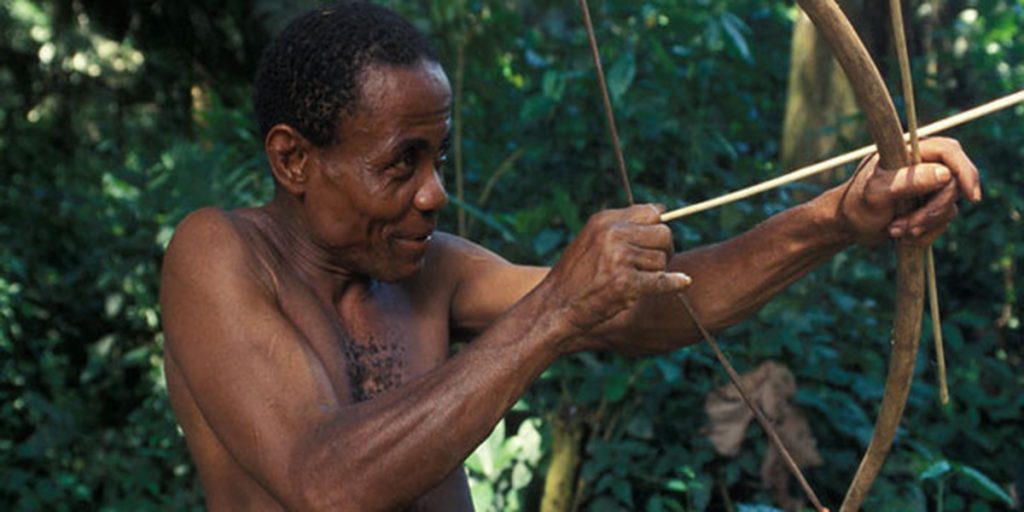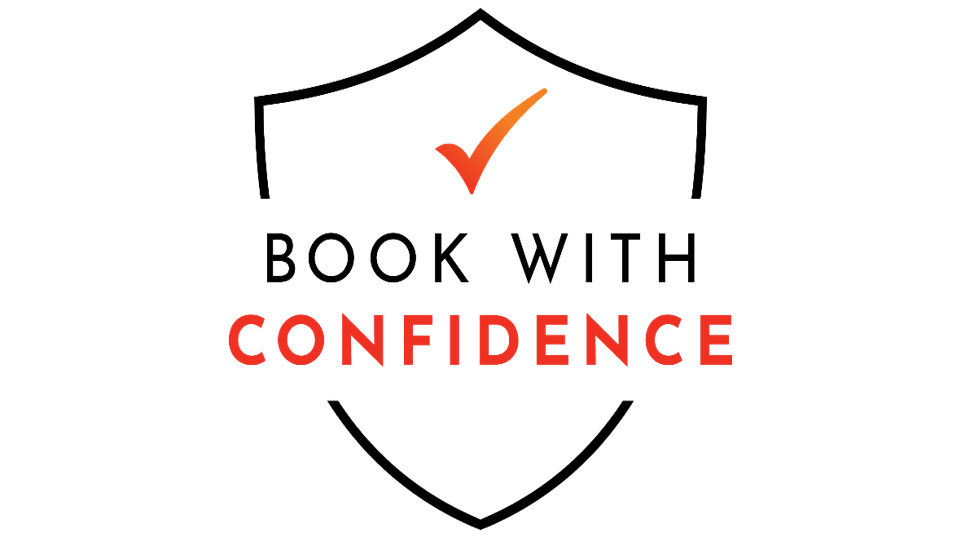Bwindi Impenetrable National Park
- Updated: 4 months ago
- By Editorial Team
Bwindi National Park, Gorilla Trekking, Location & Best time to visit
Bwindi is a world re-known gorilla trekking destination but, visiting this impenetrable jungle will expose you to other fascinating encounters beyond just gorilla trekking.
Bwindi is a destination that exhales when you inhale. Every rustle feels personal. Every step feels watched, not in fear, but with a quiet kind of curiosity.
You’re no longer in charge here. The land is. And strangely, that feels like a relief.
Sunlight seeps through the canopy in thin golden beams, and butterflies ride the air like confetti. Somewhere ahead, your guide chuckles softly, at ease in this living cathedral. You lose cell signal, but suddenly your senses work better than they have in years. Your ears catch the chirp of some bird you can’t name. Your eyes trace the shape of vines coiled like question marks. Your skin tingles.
People cross oceans for this—for a single hour that makes them feel small and deeply alive at the same time.

Wildlife (Why Visit)
Everyone comes to Bwindi for the gorillas. And yes, they’re the leading attractions and probably the reason you’ve spent months planning, saving, dreaming. But here’s the secret: the forest gives you more than you expected.
When a silverback steps out from the foliage, time does something strange. His chest is broad as a fridge. His eyes meet yours, and there’s no aggression, no fear. Just presence. He knows you’re there. He chooses to let you stay. That stillness—his gift of peace—is what breaks you. It’s not adrenaline. It’s reverence.
But this forest holds so much more.
A flash of red—the tail of a monkey swinging like a pendulum. The high call of a hornbill echoing through the branches.
Over 350 species of birds color the sky like brushstrokes. You might spot forest elephants, their feet leaving dinner-plate prints at watering holes.
Even the trees have personalities. Some are tangled in silent, centuries-old embraces—strangler figs that swallowed their host so slowly, it looks like love.
Bwindi isn’t just wild. It’s wise. Every leaf feels like it remembers more than you do.
Bwindi Impenetrable National Park Gallery
Safari Activities
At the heart is gorilla trekking—and yes, this is not a mere hike. It’s a life-changing trek to the jungle insearch of the gentle giants in the misty forest. You might walk for two hours or six but later, you will thank yourself for visiting.
You’ll climb. You’ll sweat. You’ll wonder, briefly, why you thought this was a good idea. And then, just when your calves beg for mercy—you’ll see them. A baby clings to its mother. A juvenile beats his chest like a little show-off. And you? You’ll forget every ache. Every worry. You’re inside the story now.
Other Bwindi Forest Safari activities:
- Gorilla habituation: Not a regular gorilla trek, gorilla habituation give you more time with the gentle giants. Spend four quiet, profound hours watching researchers slowly earn the trust of a gorilla family that’s still deciding whether we’re worth knowing.
- Hidden waterfalls: Situated behind vines and moss, they surprise you. Cool, clear water. You might strip to your shorts and jump in. You might cry. No one’s watching.
- Birding walks: With a local guide who hears music where you hear silence. “There,” he says, and you glimpse a green broadbill—a flash of emerald like a blink in the leaves.
- Batwa visits: They were here first. The forest’s original people and planning a Batwa visit before or after your gorilla trek will spice your adventure even further. They’ll show you how bark becomes rope, how honey is gathered from trees, how stories are passed without ever being written.
Bwindi Best Time to Visit
The very best time to visit Bwindi Impenetrable National park is from the months of June to August and December to February, the trails are drier, skies clearer, and the light falls just right for photos. If you want ease, comfort, and more certainty—this is your window. But it comes with a price: more travelers, higher demand. If you want these dates, book like you’re planning a wedding—months in advance.
The rainy seasons, from March to May and September to November, feel more intimate. Yes, the paths are slicker. The rain comes quickly. But the forest glows. Greens are deeper. The air is thick and alive. Fewer people. More solitude. And a chance to feel like the forest is speaking just to you.
Accommodation
There are several accommodations for every budget when it comes to Bwindi. Some of the known and most recommended accommodation include the following;
- Budget Lodges like Rafiki Safari Lodge or Ride 4 a Woman offer what’s real. Hot water. Soft beds. Firelight stories. The kind of simplicity that doesn’t feel like sacrifice, but choice.
- Mid-range options such as Buhoma Gorilla Camp or Ichumbi Safari Lodge bring warm meals, sweeping decks, and Wi-Fi that works until the clouds roll in. It’s not luxury—it’s comfort with character.
- Luxury stays like Mahogany Springs offer four-poster beds, riverside suites, and staff who remember your name—and your favorite drink—by the second day. It’s not about extravagance. It’s about being seen.
No matter where you stay, you’ll fall asleep to the chorus of frogs and the heartbeat of the forest. That sound doesn’t leave you.

Location
Bwindi is perfectly located in the mystic jungles of the Virungas in the Uganda’s far southwest corner, tucked along the Albertine Rift like a secret folded into the land. Think of a rough triangle: Kigali sits below, Queen Elizabeth National Park above, and Lake Bunyonyi to the east. Distance isn’t huge on paper, but hair-pin roads, mist, and photo stops stretch every kilometer.
Elevation swings between 1 160 m and 2 600 m. Mornings carry a chill that nips your ears; midday sun warms muscles you forgot you had. Pack layers, not assumptions—Bwindi enjoys surprising new arrivals with cool breezes even in “dry” months.
How to Get There
Getting There: Roads and Revelations
- From Kigali: The easiest way in. A four-to-five-hour drive past misty terraces, banana sellers, and children waving with both hands. Or hop a charter flight to Kisoro, shaving it down to 35 minutes, plus an hour’s drive to your lodge.
- From Entebbe or Kampala: It’s a full-day drive—about eight hours—but you’ll pass crater lakes, roadside grills, and red dirt that stains your shoes and your memory. Want to save time? Fly with Aerolink into Kisoro or Kihihi. The flight takes an hour. The views stay with you much longer.
Tips
Layer up: quick-dry base, warm mid, rain shell. When clouds roll in, you’ll switch combinations faster than a Netflix binge. Gloves save knuckles from nettles and double as a grip when the trail tilts skyward.
- Hire a porter—USD 20 buys you a walking coach, extra photographer, and local storyteller in one.
- Carry cash for tip jars and craft stalls; ATMs live far from here.
- Keep a respectful seven-meter buffer from gorillas … unless they forget the rule. If one grazes past, stay still and savor the best humble-brag of your life.
FAQ
How hard is the trek, really?
Some days, it feels like a forest walk. Other days, it’s like nature’s version of a stairmaster. But it’s never rushed. Rangers assess your group, your pace, your comfort. They’ll match you with a trail that fits. And those breaks? They’re magic. You catch your breath under a giant tree, birds singing, light curling through the mist. Then you remember: the effort is the point. When you finally meet that gorilla eye to eye, your sweat feels like a sacred offering.
Is Bwindi safe for solo travellers?
Yes, Bwindi gorilla trekking is Safer than you may think. Rangers walk with you. Lodges know where you are. The forest might be wild, but it’s not reckless. The people here are proud protectors—of their home, and of you. The biggest danger? Underestimating the rain. Or how much you’ll feel when you leave.
Can I take photos of gorillas?
Yes, and you’ll want to. Just turn off your flash—it startles them. Practice your settings before the trek. But here’s what no one tells you: the best shot is the one you take with your eyes. After a few clicks, lower your camera. Just look. Meet their gaze. That moment will live longer than anything stored on a memory card.
What else goes well with Bwindi?
- Queen Elizabeth NP: For lions in trees and boat cruises on hippo-filled waters.
- Lake Bunyonyi: For stillness. Canoes. Sunset dinners.
- Murchison Falls: For thunder. The Nile squeezes through a seven-meter crack in rock and explodes.










